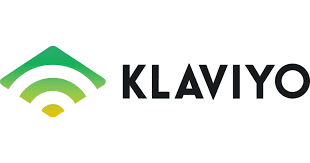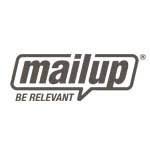Hey there, fellow marketers and business enthusiasts! As we dive into 2024, the digital marketing landscape is more vibrant and challenging than ever. At the heart of this digital revolution is email marketing, a tried and true method that has stood the test of time. But with so many tools out there, it’s like standing in the cereal aisle – overwhelming and full of choices. Today, we’re simplifying your decision-making process by comparing two giants in the email marketing world: Klaviyo and MailUp. Let’s find out which one will be your email marketing superhero in 2024!
| Klaviyo | MailUp |
|---|---|
 |  |
| G2 Score – 4.6 out of 5 stars | G2 Score – 3.7 out of 5 stars |
| TrustRadius Score – 9.0 out of 10 | TrustRadius Score – 6.0 out of 10 |
Ease of Use: A Critical Comparison
When it comes to email marketing tools, ease of use is not just a nice-to-have, it’s a must-have. After all, who wants to spend hours figuring out how to send a simple email? Let’s compare Klaviyo and MailUp on this front.
Klaviyo’s User-Friendly Interface
Klaviyo prides itself on its intuitive interface. From the moment you sign up, you’re greeted with a clean, uncluttered dashboard that feels like a breath of fresh air. Setting up your first campaign? It’s a walk in the park. The platform guides you with clear, step-by-step instructions, making it perfect for beginners and those who value simplicity.
But simplicity doesn’t mean lack of depth. For the more experienced marketers, Klaviyo offers advanced features like segmentation, A/B testing, and detailed reporting – all accessible without needing a degree in rocket science. The real beauty lies in how Klaviyo makes complex features feel approachable, even for the less tech-savvy among us.
MailUp: Flexibility for the Tech-Savvy
On the flip side, MailUp is like a playground for the tech enthusiasts. It offers a rich set of features that cater to those who love to tweak and customize. While this sounds fantastic, the learning curve can be steep. The interface is packed with options, which can be overwhelming for new users or those who prefer a more straightforward approach.
However, once you get the hang of it, MailUp becomes a powerful tool in your arsenal. Its ability to integrate with various platforms and the flexibility it offers in designing complex email sequences is unmatched. But remember, with great power comes great responsibility (and a bit more time spent on learning the ropes).
The Verdict on Ease of Use
So, who wins the ease of use battle? It really boils down to your personal preference and skill level. If you’re looking for an easy, straightforward start, Klaviyo is your go-to. Its user-friendly interface makes email marketing feel like a breeze. But if you’re willing to climb the learning curve for more customization and control, MailUp will reward you richly.
Both Klaviyo and MailUp have their strengths when it comes to ease of use. Klaviyo shines with its user-friendly approach, ideal for beginners or those who prefer simplicity without sacrificing power. MailUp, on the other hand, is perfect for those who crave detailed control and customization, provided you’re willing to put in the time to learn its intricacies.
Integration Capabilities: Klaviyo vs MailUp
In the world of digital marketing, integration is the name of the game. How well your email marketing tool plays with others – like your CRM, e-commerce platform, or social media – can make or break your marketing strategy. Let’s see how Klaviyo and MailUp stack up in this arena.
Klaviyo’s Seamless Integration
Klaviyo is like the popular kid in school that gets along with everyone. It offers seamless integration with a plethora of platforms, particularly e-commerce platforms like Shopify, Magento, and WooCommerce. This integration isn’t just skin-deep. Klaviyo dives into the data from these platforms, allowing you to create highly targeted and personalized email campaigns based on customer behavior, purchase history, and much more.
For instance, if you run an online store on Shopify, Klaviyo can track your customers’ browsing habits and purchase history. This data is gold, enabling you to send personalized product recommendations or replenishment emails without lifting a finger. It’s like having a personal assistant who knows your customers inside out.
MailUp’s Versatile Integration Approach
MailUp, while not as e-commerce focused as Klaviyo, takes a more versatile approach to integration. It plays well with a variety of platforms, including CRM systems, social media, and other marketing tools. MailUp’s strength lies in its API and webhooks, which offer a more technical, yet flexible, approach to integration.
This means you can connect MailUp with just about any platform, but it might require a bit more technical know-how. For businesses with a diverse range of tools and platforms, this level of customization is invaluable. You can tailor MailUp’s integration to fit your unique ecosystem, creating a truly integrated marketing machine.
Integration: Who Takes the Crown?
Klaviyo is the clear winner for e-commerce businesses looking for deep, automatic integration that enhances customer personalization and targeting. Its ability to leverage e-commerce data is unparalleled, making it a powerhouse for online retailers.
MailUp, however, is the better choice for businesses looking for a more adaptable and customizable integration experience. Its API and webhook capabilities mean you can integrate it with a wide array of platforms, though it might require some technical expertise.
Klaviyo and MailUp both offer strong integration capabilities, but their strengths lie in different areas. Klaviyo excels in e-commerce integration, making it ideal for online stores. MailUp offers broader, more customizable integration options, perfect for businesses with diverse platforms and the technical know-how to leverage them.
Automation Features: Klaviyo vs MailUp
Moving forward, let’s dive into the world of automation – a critical component of any email marketing tool. Automation not only saves time but also allows for more personalized and timely interactions with your audience. Let’s compare how Klaviyo and MailUp fare in this vital aspect.
Klaviyo’s Advanced Automation
Klaviyo takes automation to a whole new level. Its automation workflows are not just about sending emails at predetermined times; they’re about creating personalized journeys for each subscriber. With Klaviyo, you can set up complex triggers based on user behavior, like browsing history, past purchases, or engagement level.
Imagine a customer visiting your e-commerce site, adding items to their cart, but not completing the purchase. Klaviyo can automatically send a cart abandonment email, gently nudging them to complete their purchase. But it doesn’t stop there. Based on their response or lack thereof, Klaviyo can trigger a series of follow-up emails, each tailored to their interaction.
MailUp’s Flexible Automation
MailUp, on the other hand, offers a more flexible approach to automation. While it might not have as deep e-commerce integrations as Klaviyo, it compensates with its ability to create diverse and complex automation workflows. These workflows can be based on a variety of triggers, including subscriber actions, time intervals, and even custom events.
MailUp’s strength lies in its adaptability. Whether you’re a small business, a blogger, or a large enterprise, MailUp’s automation tools can be tailored to fit your needs. From simple welcome email series to complex multi-step campaigns, MailUp offers the flexibility to design your automation strategy exactly how you want it.
Automation Showdown
Klaviyo is the champion for e-commerce businesses seeking sophisticated, behavior-driven automation. Its ability to create personalized customer journeys based on detailed e-commerce data is a game-changer.
MailUp, with its flexibility and wide range of triggers, is ideal for those who want to craft unique automation workflows without the e-commerce-centric approach. It’s perfect for businesses looking for a tool that adapts to their varied needs.
In summary, both Klaviyo and MailUp offer strong automation features, but they cater to different needs. Klaviyo’s advanced, e-commerce-focused automation makes it ideal for online retailers looking to maximize customer engagement and conversion. MailUp offers broader, more adaptable automation capabilities, suitable for a wide range of businesses and marketing strategies.

Related: Check out our free SEO suite

Analytics and Reporting: Klaviyo vs MailUp
In the world of email marketing, the ability to track and understand your campaign’s performance is crucial. Analytics and reporting tools not only measure success but also provide insights for future strategies. Let’s see how Klaviyo and MailUp measure up in this department.
Klaviyo’s Data-Driven Analytics
Klaviyo’s analytics are like a crystal ball, giving you deep insights into your campaigns. The platform provides detailed reporting on various metrics such as open rates, click-through rates, and conversions. But Klaviyo goes beyond just numbers; it offers predictive analytics, helping you forecast future trends based on past behaviors.
One of Klaviyo’s standout features is its revenue attribution. It tracks how much revenue each email campaign generates, an invaluable tool for ROI-focused marketers. You can see which campaigns are driving sales and adjust your strategy accordingly. Klaviyo’s segmentation tools also play a big role here, allowing you to analyze how different customer groups interact with your emails.
MailUp’s Comprehensive Reporting
MailUp steps up to the plate with robust reporting tools that provide a comprehensive overview of your campaign performance. It covers all the basics you’d expect, like open rates and click-through rates, but also delves into more detailed statistics like geolocation tracking and device usage.
MailUp’s strong suit is its customizability in reporting. You can create custom reports tailored to your specific needs, which is great for businesses with unique metrics to track. This flexibility ensures that you’re not just stuck with standard reports but can dig into the data that matters most to you.
Analytics and Reporting: The Faceoff
Klaviyo excels with its in-depth, data-driven analytics and its ability to attribute revenue to specific campaigns. Its predictive analytics are a boon for strategic planning, making it a top choice for businesses focused on growth and ROI.
MailUp, with its customizable reports, appeals to those who need to track unique metrics or want a more hands-on approach to their analytics. It provides a solid foundation for businesses to understand their email campaign performance from multiple angles.
In summary, Klaviyo is the go-to for detailed, revenue-focused analytics and predictive insights, ideal for e-commerce and growth-oriented businesses. MailUp offers great versatility in analytics, perfect for businesses that need customizable reporting options.
Customer Support and Resources: Klaviyo vs MailUp
An often overlooked but crucial aspect of any email marketing tool is the quality of customer support and the availability of resources for learning and troubleshooting. Let’s compare how Klaviyo and MailUp fare in providing support to their users.
Klaviyo’s Support and Educational Resources
Klaviyo takes customer support seriously, offering various channels including email, chat, and an extensive knowledge base. Their response time is generally quick, and users often praise the quality and helpfulness of the support team. Whether you’re facing a technical glitch or need advice on best practices, Klaviyo’s support team is reputed for being both knowledgeable and friendly.
Apart from direct support, Klaviyo offers a wealth of educational resources. Their blog, guides, and webinars are not just about using Klaviyo’s features; they cover broader topics in email marketing, e-commerce strategies, and customer segmentation. This makes Klaviyo’s resources valuable not just for troubleshooting but also for learning and growing your marketing skills.
MailUp’s Support System
MailUp also provides a robust support system, with options including email, phone, and a detailed knowledge base. The quality of support is generally well-regarded, though some users note that response times can vary. Where MailUp really shines is in its international support, catering to a global user base with multilingual support – a boon for non-English speaking users.
In terms of educational content, MailUp offers a solid range of guides, tutorials, and case studies. These resources are particularly useful for understanding the full range of MailUp’s capabilities and getting inspiration from successful campaigns. While not as extensive as Klaviyo’s offerings, MailUp’s resources are well-crafted and informative.
Evaluating Customer Support and Resources
When it comes to customer support and resources, both Klaviyo and MailUp offer strong support systems and educational content. Klaviyo has an edge in the breadth and depth of its resources, especially for English-speaking users. Its focus on not just product-specific but also broader marketing education is a significant plus.
MailUp, with its multilingual support and tailored resources, is a great option for international businesses or those outside the English-speaking world. Its user guides and case studies provide valuable insights, particularly for leveraging the platform’s unique features.
Your choice between Klaviyo and MailUp in terms of support and resources may depend on your specific needs. If you value a wide range of high-quality, English-language educational content, Klaviyo is the way to go. If international support and multilingual resources are more important to you, then MailUp is a strong contender.
Pricing and Value for Money: Klaviyo vs MailUp
In the decision-making process for choosing an email marketing tool, pricing plays a pivotal role. It’s not just about the cost, but also the value you get for your investment. Let’s delve into the pricing structures of Klaviyo and MailUp and evaluate their value for money.
| Klaviyo | Free Plan: Allows up to 250 contacts and 500 email sends, with Klaviyo branding on emails. Email Plans: Pricing starts based on the number of contacts. For example, for up to 500 contacts, the cost is around $20 per month. Includes email and SMS capabilities, segmentation, and automation. Pricing scales with the number of contacts. SMS and Email Combined Plans: Offers combined packages for businesses that want to use both email and SMS marketing. Pricing is based on the number of contacts and SMS messages sent. |
| MailUp | Pay Per Speed Plans: MailUp’s pricing is based on sending speed rather than the number of contacts. Starts at around $65/month for the slowest sending speed. Monthly Plans: Also offers traditional monthly plans based on the number of emails sent, with prices starting at around $85/month for up to 400,000 sends. Prepaid Credits: Alternatively, you can buy prepaid credits for sending emails without a monthly fee. All plans include features like email automation, transactional emails, and analytics. |
Klaviyo’s Pricing Structure
Klaviyo operates on a tiered pricing model, which varies based on the number of contacts in your email list. This makes it scalable and suitable for businesses of all sizes. For small businesses or startups with a limited number of contacts, Klaviyo can be quite cost-effective. However, as your contact list grows, so does the price, which can become a significant expense for businesses with large email lists.
What you get for this price is access to Klaviyo’s powerful suite of features, including its advanced segmentation, detailed analytics, and sophisticated automation tools. Klaviyo is often viewed as an investment; the return on investment (ROI) in terms of enhanced email marketing capabilities can be significant, especially for e-commerce businesses.
MailUp’s Pricing Approach
MailUp’s pricing model is somewhat different. It offers more flexibility with both pay-as-you-go and subscription options. This flexibility can be advantageous for businesses with fluctuating email marketing needs. For instance, if you run seasonal campaigns and don’t need consistent email marketing services throughout the year, the pay-as-you-go option can be cost-effective.
MailUp’s subscription plans are also tiered based on the number of emails sent, rather than the number of contacts. This can be a more affordable option for businesses with large contact lists but moderate email sending frequencies. Additionally, MailUp’s range of features, including its robust automation and customization options, offer good value for the price.
Evaluating Value for Money
The choice between Klaviyo and MailUp in terms of pricing and value for money depends largely on your business’s size, email marketing frequency, and specific needs.
Klaviyo, with its contact-based pricing, can be more expensive for businesses with large email lists. However, its advanced features and specialization in e-commerce make it a valuable tool that can significantly boost your marketing effectiveness and ROI.
MailUp, offering both pay-as-you-go and subscription plans, provides greater flexibility and can be more cost-effective for businesses with varying campaign frequencies or large contact lists but lower sending volumes. Its broad feature set and customization capabilities make it a strong contender for a wide range of businesses.
In summary, Klaviyo is ideal for businesses focused on e-commerce and those looking for advanced features to maximize their email marketing ROI, while MailUp is suited for businesses seeking pricing flexibility and for those with large contact lists who might not send emails frequently.
Conclusion
As we wrap up our exploration of Klaviyo and MailUp, it’s clear that both platforms offer robust features for email marketing, but they cater to different needs and preferences. Klaviyo shines with its intuitive interface, advanced e-commerce integrations, sophisticated automation, and in-depth analytics. It’s the go-to choice for e-commerce businesses and those looking to leverage detailed customer data for personalized marketing campaigns. The pricing, based on contact size, might be a consideration for businesses with large lists, but the ROI potential is significant.
MailUp, with its flexible integration, adaptable automation, comprehensive reporting, and versatile pricing models, appeals to a broad range of businesses. Its strength lies in its adaptability to various marketing needs and the flexibility of its pricing structure, making it ideal for businesses with fluctuating campaign requirements or large contact lists.
Ultimately, the choice between Klaviyo and MailUp hinges on your specific business needs, your level of technical expertise, and your budget. Klaviyo is your match if you’re e-commerce centric and data-driven, seeking a tool that grows with your business. MailUp is the better fit if you value flexibility, customization, and a pricing model adaptable to your campaign’s scale and frequency. In the dynamic world of email marketing in 2024, both Klaviyo and MailUp stand out as top contenders, each with unique strengths. The key is to assess your goals, resources, and strategy to choose the tool that aligns best with your business’s trajectory.
Read Next:
- ConvertKit vs VerticalResponse: The Best Email Marketing Tool for 2024
- ConvertKit vs iContact: The Best Email Marketing Tool for 2024
- ConvertKit vs Zoho Campaigns: The Best Email Marketing Tool for 2024
- ConvertKit vs Drip: The Best Email Marketing Tool for 2024
- ConvertKit vs Pabbly Email Marketing: The Best Email Marketing Tool for 2024






















Comments are closed.